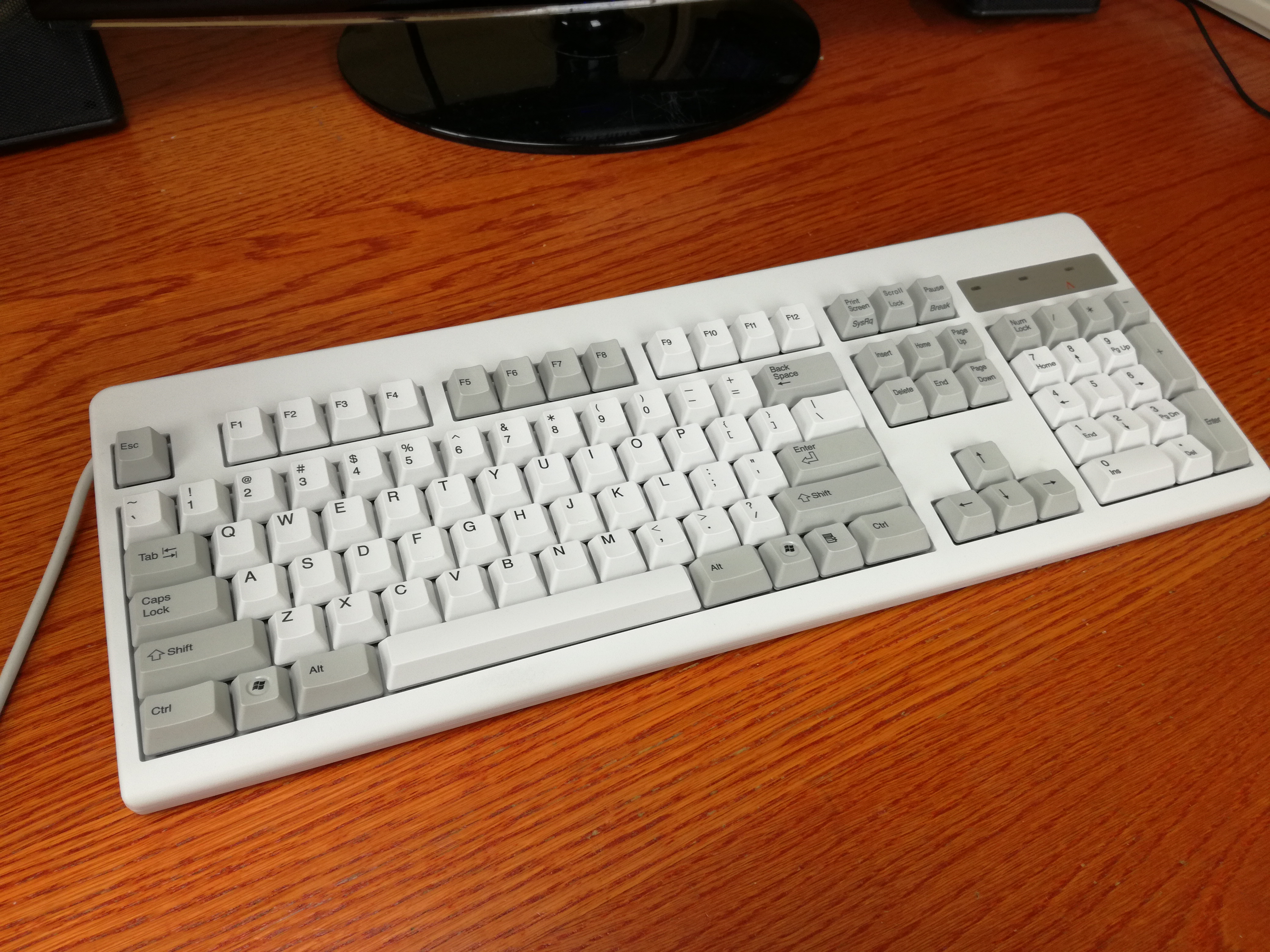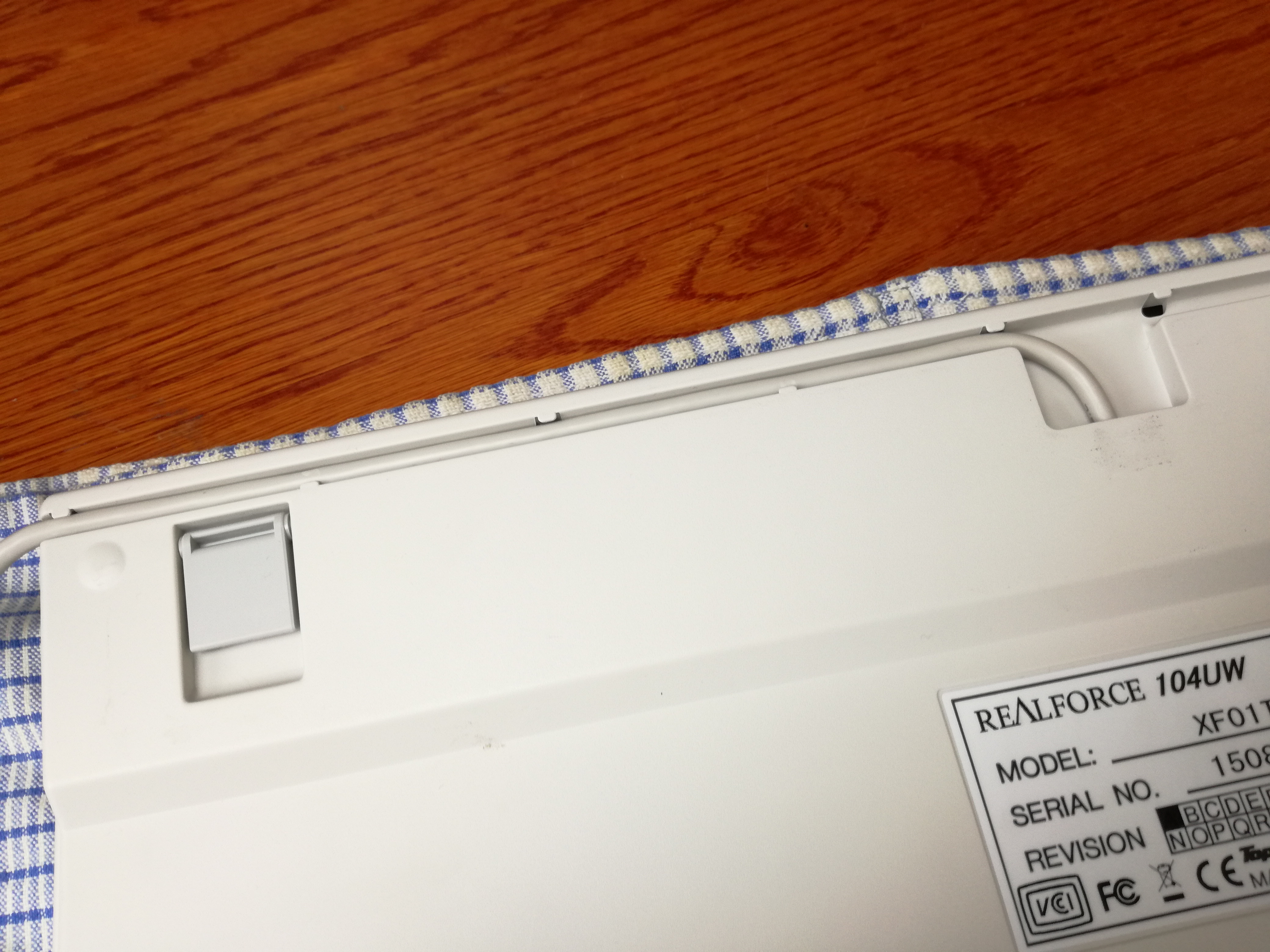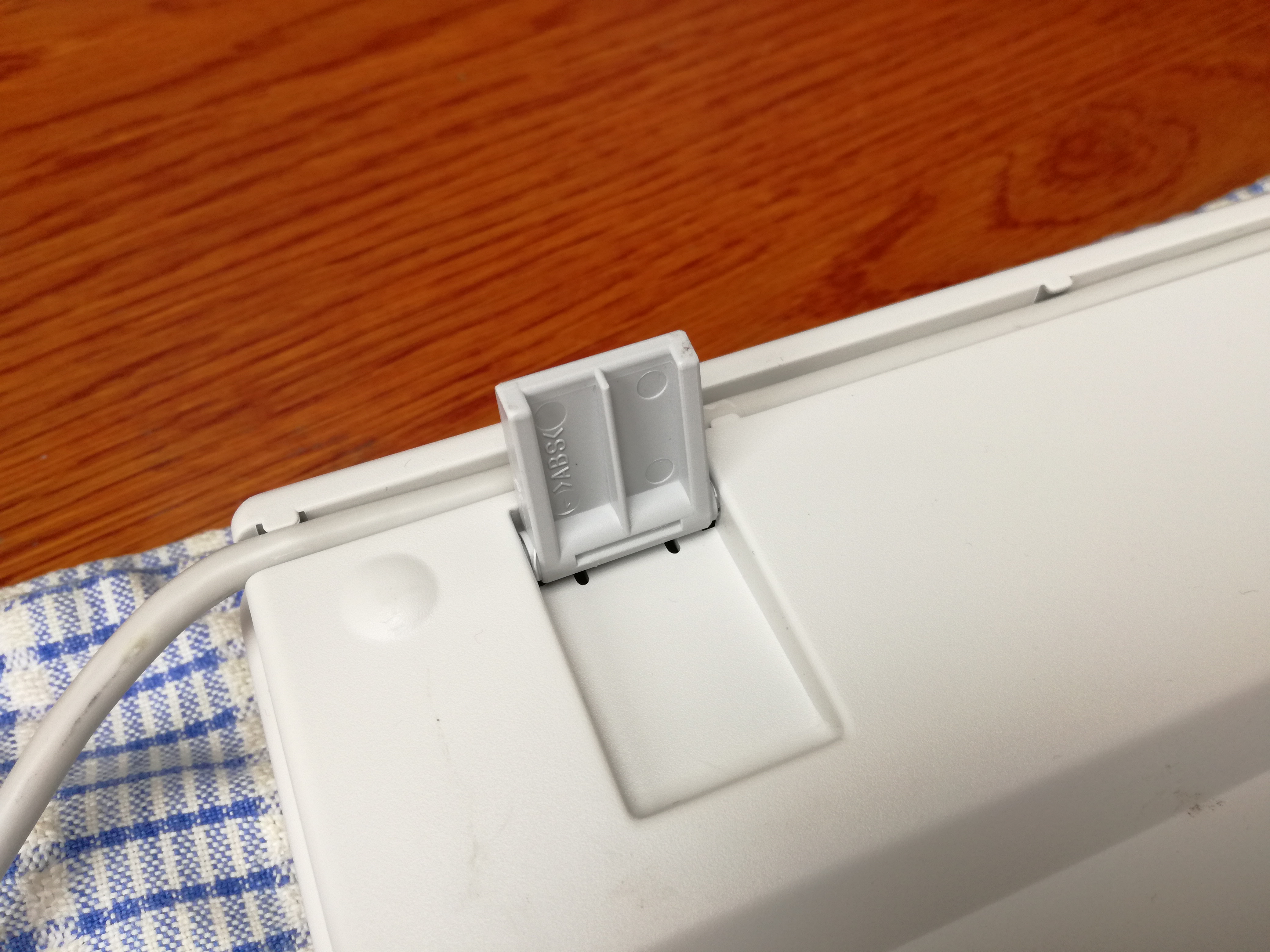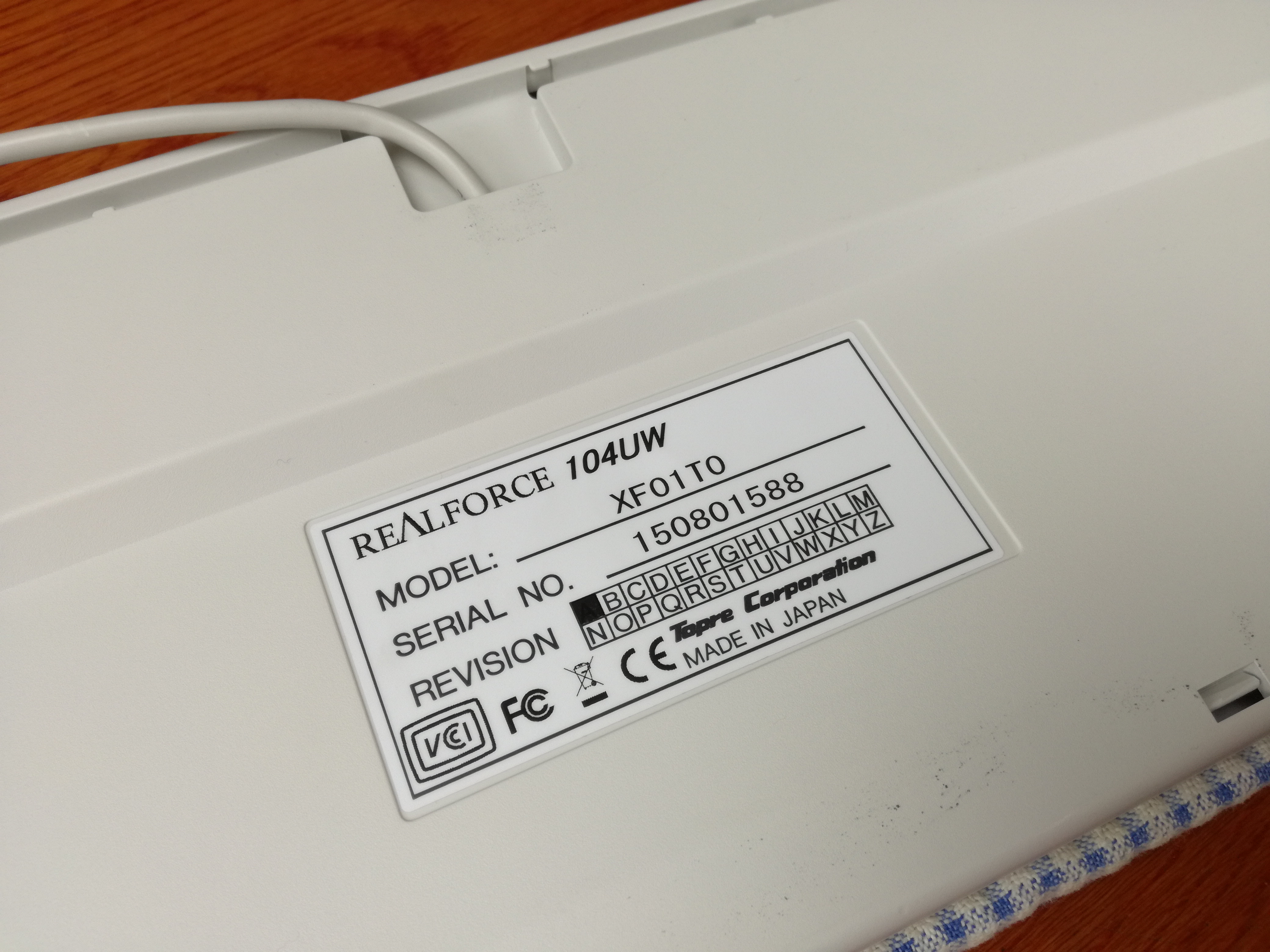Topre RealForce 104UW Keyboard Review
Why you can trust Tom's Hardware
Product Tour
The Realforce 104UW is, above all, a keyboard with Topre switches. That is, although it has several other interesting properties as well, none are as important as the fact that it uses Topre switches. In an age where Cherry MX switches (and its clones) dominate the mechanical keyboard market, Topre is one of the few switches that has been around since the 1980s and lived to tell the tale. Indeed, Topre switches enjoy a small but extremely dedicated following that has been enough to sustain it even during the decline of mechanical keyboards in the late 1990s.
In many ways, the Realforce 104UW looks like it came straight from that time period. With its unassuming looks, plain white case, lack of any kind of backlighting, and its (at first glance) simple-looking keycaps, it’s clearly not a board developed to impress people by virtue of its looks. The relatively wide rim and large bezel at the top in particular makes it look almost old-fashioned. But don’t be fooled, this board is all business.
There is no backlighting, additional ports, funky keycap printing, radical case shape, media keys, shortcut buttons, volume adjuster, gaming lock, software, or programmability. In fact, going through the specs table above, you’ll notice a frequent lack of various features. The Realforce 104UW is not a keyboard with lots of bells and whistles; it’s a typing keyboard meant to simply get the job done, and do it well.
All Topre keyboards are expensive at upwards of $200, from the $205 Realforce 87U to the $225 HHKB Pro 2. Leopold Topre keyboards retail at a price in the same ballpark, as did the Cooler Master Novatouch. Other, more elusive designs can be several times the cost of that, even. These boards hold their value well, too, however.






Switches
The Topre switch is a sophisticated design based around a variable capacitive element inside a rubber dome. Yes, that’s right, we used the “R” word; at heart, the Topre switch is a rubber dome switch. This fact, together with its polarizing keyfeel and high price, is the source of major disputes and disparity in the keyboard community, and has been since time immemorial, with staunch supporters backing it and fierce opponents ridiculing it.
Proponents argue that it’s the best switch ever made, while opponents sarcastically call it “the most expensive rubber domes ever made.” It’s a bit like Marmite then — you either love it, or hate it.
These switches operate with two capacitive plates on a PCB, above which sits a conical metal spring that’s held in place by the rubber dome above it. As the key is depressed, the spring is pressed flat, changing the capacitance of the plates below. This difference is registered by the keyboard and interpreted as a keypress. If that sounds complicated, you’re right – the engineering precision required to produce capacitive keyboards is more costly than that needed to produce contact-based designs. It’s for this reason that capacitive keyboards, which were fairly common in the 1970s and 1980s, have largely been phased out. Topre lingers as one of the precious few companies to still produce capacitive keyboard switches. (Several manufacturers make clones, and other capacitive switches are still made on a small scale by other companies).
Get Tom's Hardware's best news and in-depth reviews, straight to your inbox.
Capacitive switches are highly sensitive and durable, with a general lifetime around 100 million keystrokes, although Topre claims a lifetime of 50 million keystrokes, presumably as the rubber domes give out before the capacitive sensing assembly does. They also possess inherent n-key rollover (NKRO), meaning that you can press as many keys as you want at the same time and they will all register. Note that the USB interface does present some limitations, which we’ll examine in the “Tests and Performance” section.
Topre uses high-quality rubber for the dome sheets, which give it a keyfeel that is said to be more refined and snappier than other rubber dome systems. In addition, Topre switches feature what’s called a “dome with slider” design — essentially an augmented version where a separate slider is used for the switch, rather than the keycap stem pressing down directly unto the dome, which (depending on the design) can take much of the mushiness associated with typical rubber domes out of the keyfeel. Topre is not the only one to produce dome-with-slider switches, many of which are more high-quality than typical domes, although Topre is among the very few companies whose domes are capacitive in origin.
Arguably most importantly though, and certainly the standout unique difference between Topre and typical rubber domes, is the fact that Topre switches (by virtue of the capacitive sensing circuit) can actuate before bottoming out. With a typical rubber dome board, you have to press the keys all the way down before they register, which can result in a harsh typing style (hammering down on the keys), and as a result, low typing comfort. Topre switches register at 2.6 out of 4.0mm, meaning you don’t have to press the keys all the way down, which lets you type in a more relaxed manner.
Being rubber dome-based, the tactile bump on the keys is especially rounded and smooth rather than sharp and harsh, and the keys employ a variable weighting ranging from 30 to 55gf — this is where the term “Realforce” comes from. The keys at the left and right side of the alphanumeric block have the lowest weighting at 30 gf, and moving into the middle, the weighting gradually increases to 45gf, with the Escape key weighted at 55gf. The idea here is that your pinky fingers are the weakest and your index fingers the strongest, with the variable weighting intended to compensate for this difference in digit strength.
It should be noted, however, that because of this mechanism, the strength of the tactile bump decreases with switch weighting, meaning that the lowest-weighted switches are almost linear, and the highest-weighted ones having a tactile bump several times larger.
Keycaps
The Realforce 104U’s keycaps, in all their simple-looking glory, are actually quite high-quality. They’re made of PBT and use dye-sublimation printing for the lettering. PBT, or polybutylene terephthalate, is a chemically resistant plastic with several important advantages over the much more commonly used ABS (acrylonitrile butadiene styrene), such as resisting yellowing over time and much greater resistance to physical wear (“shining up”). The Spacebar is, conversely, made out of ABS, because of engineering difficulties associated with injection-molding large chunks of PBT. Only a few manufacturers have produced PBT spacebars, although aftermarket PBT Topre spacebars are available (for a price).


Dye-sublimation is, similarly, an extremely durable printing method in which ink is sunk into the plastic during the molding process, which makes it almost impossible to wear off the lettering. Although dye sublimation is typically not as sharp or high-contrast as doubleshot injection molding, it is nevertheless a printing method of significantly higher quality than the more common lasering or pad-printing. Subjectively, the lettering on the Realforce’s caps in particular are exceptionally dark and sharp.
MORE: Best Deals
MORE: How We Test Mechanical Keyboards
MORE: Mechanical Keyboard Switch Testing Explained
MORE: All Keyboard Content
-
dark_lord69 Look an early 90's keyboard with a 2017 gamer hardware price!Reply
HA! If I knew I would have kept hundreds for those crappy keyboards!
Don't let the price fool you... It's just a keyboard. -
therealduckofdeath Why not got full-tilt retro and make one with the super high keys of a VIC or a PET? They could charge 4-500 bucks for that, I bet...Reply -
toddybody Coming from a CM Storm Quickfire Rapid TK...now on the Logitech G810 Orion Spectrum, I can't see the value of these 150.00+ keyboards.Reply -
Co BIY Keyboard reviews need a Price/performance graph. Something to help the average reader find the "sweet spot" where good performance meets reasonable price.Reply
I'm on a Microcenter Inland DK-3001B - It's an obvious step-up in keyfeel from OEM boards and has nice LED mono-blue through key backlighting. All that for $25. -
husker Nice article, but I thought listing "Highly divisive--love it or hate it" on the Final Analysis page as a con is not fair. This seems to be saying that "you might love this!" is a negative. Agreed, you might hate it, but listing it as a con is pre-supposing you will hate it. With any product you have to determine whether or not you like it, but listing the fact that you might not like it as a con seems a bit unfair.Reply -
techy1966 They are kidding right over $200 for a keyboard that looks like it was made back in 1993. This is a flat out copy of the fujitsu keyboards from back in the day even the same color design. I know this because I still have one of them laying around which I paid a lot less than $200 for it at the time and it is most likely built a lot better as well since the thing weighs a fair amount and has a metal bottom and mech keys since back then that was the thing. O got mine back I think in 1991 maybe a bit older I used to have several of them but over the years they got lost or borrowed. Good to see they want to bring the retro look back but at least do not try to charge prices that are way above what they should be for it.Reply -
Timothy_11 >$200 for a keyboard that's made essentially the same as the $5 Dell/HP rubber dome keyboards? I'll pass.Reply
